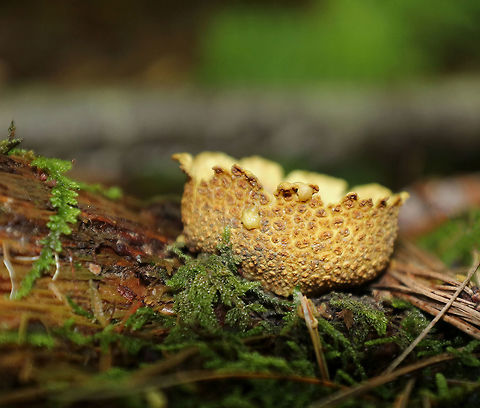
Appearance
Earthballs are superficially similar to, and considered look-alikes of the edible puffball, but whereas the Puffball has a single opening on top through which the spores are dispersed, the earthball just breaks up to release the spores. Moreover, Scleroderma citrinum has much firmer flesh and a dark gleba (interior) much earlier in development than puffballs. Scleroderma citrinum has no stem but is attached to the soil by mycelial cords. The peridium, or outer wall, is thick and firm, usually ochre yellow externally with irregular warts.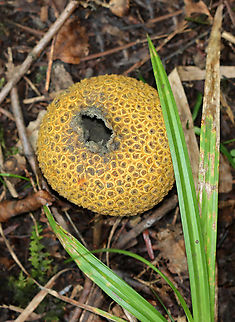
Naming
This fungus was first described in scientific literature by Christian Hendrik Persoon in 1801. (Persoon's Synopsis Methodica Fungorum, published in 1801, marked the starting point for taxonomy of gasteromycete fungi.)The gasteromycetes are not close relatives but simply a group of fungi sharing the characteristic of producing spores within a sealed spherical, oval or pear-shaped casing. It turns out that Scleroderma fungi such as the Common Earthball are in fact close relatives of the boletes, and in particular boletes of the genus Gyroporus.
Synonyms:
- Lycoperdon tessellatum Schumach.
- Scleroderma vulgare Hornem.
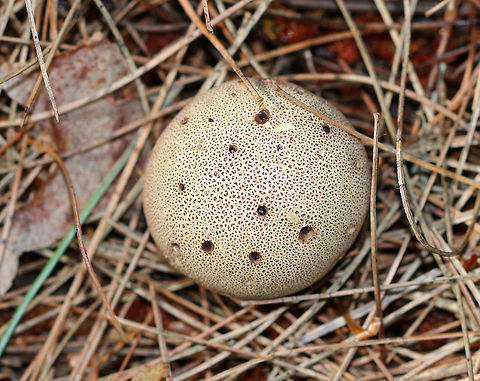
Distribution
The Common Earthball is widespread and common throughout the British Isles. Very common and widely distributed throughout North Temperate zone, especially western Europe and eastern North America.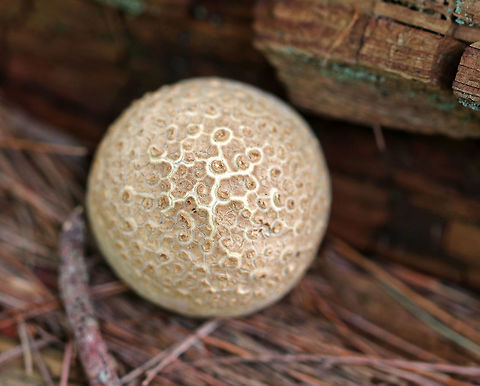
Habitat
Epigeous exceptionally sub-hypogeous, in soil, under leaves and litter in mixed plantation of Pinus spp. and Betula sp., Dec-May.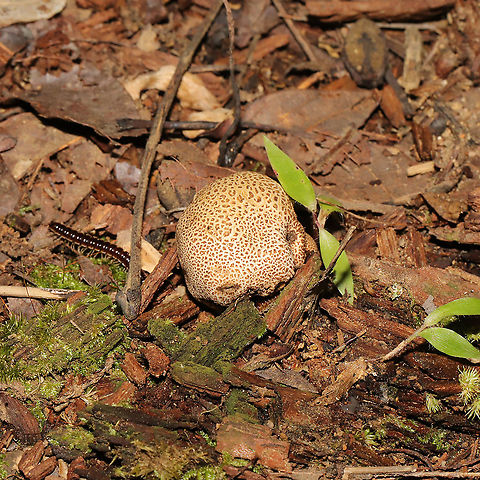
Uses
Ingestion of scleroderma citrinum can cause gastrointestinal distress in humans and animals, and some individuals may experience lacrimation, rhinitis and rhinorrhea, and conjunctivitis from exposure to its spores.References:
Some text fragments are auto parsed from Wikipedia.
